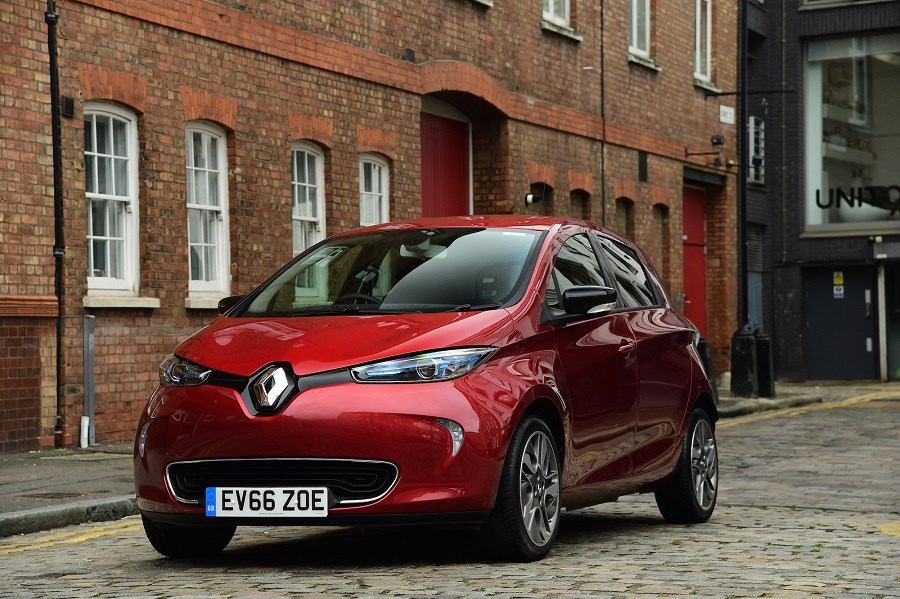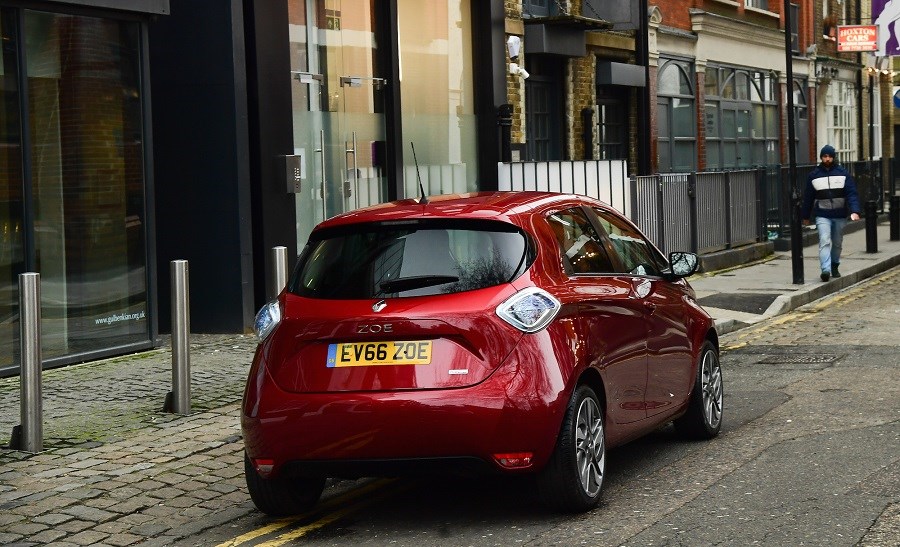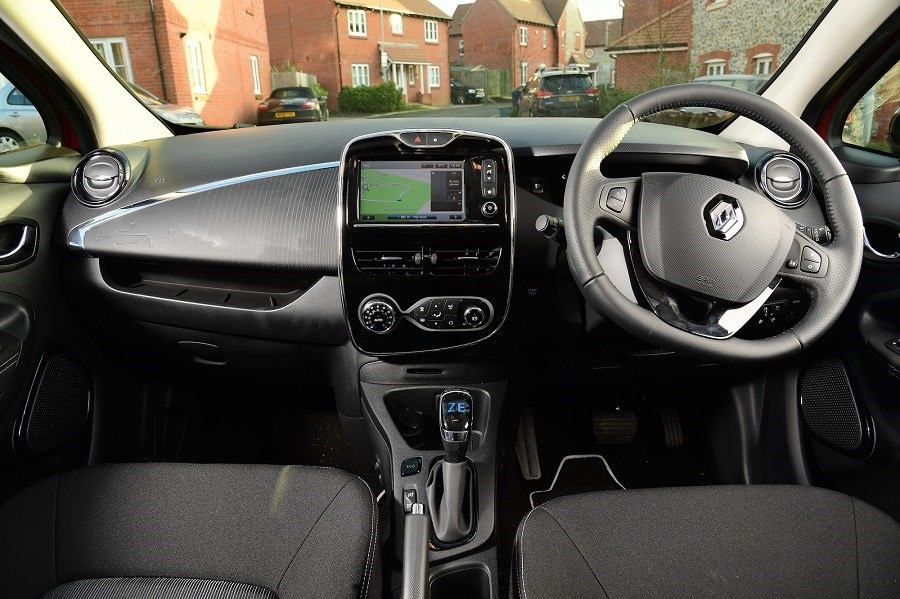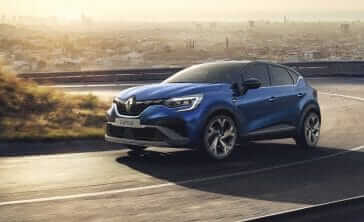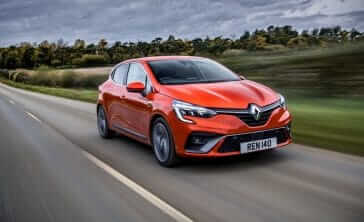Model review
Renault started an ambitious electric offensive by debuting four concepts at the 2009 Frankfurt Motor Show—the Twizy, Kangoo, Fluence and Zoe, all of which went on to spawn production cars in the following years.
Renault unveiled a production-ready version of the Zoe in 2012, with UK sales starting the following year.
The Zoe has proven to be Renault’s most successful EV out of the original quartet, with 200,000 examples sold by the start of 2019, half of which remained in France.
Aside from the Leaf, the Zoe was the first affordable electric car with mass popularity and was helped by a fantastic starting price of £13,695 new after all the government’s discounts, which have since reduced.
As with most early electric cars, the Zoe was initially offered with a mandatory battery leasing scheme on top of the price of the car.
Latest model
Despite not receiving any major styling changes since launch, Renault has tweaked the Zoe’s underpinnings for the better.
The first major change came in 2016, when Renault offered the Zoe with a new ZE40 battery. This allowed for a longer electric range without the need for compromise on interior or boot space. The new battery allows for an electric range of 250 miles, although a more realistic 186 miles is pointed to as an attainable real-world range. The update also saw the Zoe get improved connectivity through Android Auto capability and further app integration.
In 2018, the Zoe saw a boost in performance, as the electric motor was upgraded from the R90 unit to a more powerful R110, which delivers 108bhp.
In 2019, Renault streamlined the equipment grades to leave Dynamique Nav and a new ‘S Edition’ model, which comes with a Bose sound system and a reversing camera.
Value for money
The Renault Zoe has always had value on its side, although the latest car isn’t quite the bargain it once was. Prices start from £21,220, which doesn’t include the government’s electric car grant. However, at that price you still have to pay to lease the battery, which ranges from £49 per month for an annual mileage less than 4,500 miles up to £110 per month for unlimited miles. This can be a costly expense each month, even if it does include breakdown assistance. However, potential buyers now have the option to purchase the Zoe and its battery outright; but at £27,870, it seems like a costly way to go.
On the plus side, it comes with plenty of kit for the money, including a seven-inch touchscreen with satellite navigation as well as automatic lights, automatic wipers, and climate control.
The Zoe is a great value used model with some examples available for under £6,000, excluding battery costs. Nearly-new models are great value, too, with examples registered in the last 12 months available for less than £13,000. The more desirable R110 version starts from around £15,000 nearly-new, largely thanks to its extra performance.
Looks and image
The Zoe is a quirky-looking EV, and it can still be considered stylish several years on from its debut.
The wide front fascia and lack of imposing grille gives the Zoe an interesting charm, which is helped by a range of interesting alloy wheel designs and boomerang-shaped daytime running lights. Handles integrated into the glass of the doors can make the Zoe look like a three-door car from a distance, too.
However, we’ll let you make your own mind up about the looks, as from certain angles the design is just a bit awkward but of course, looks are subjective.
However, despite several refreshes, the Zoe’s interior is starting to feel a bit outdated, particularly when you compare it to the latest models from the French manufacturer.
A seven-inch touchscreen is offered as standard, which offers satellite navigation, Bluetooth,and DAB radio. It’s a user-friendly system with good functionality. The clutter-free layout is also an advantage, while a futuristic digital display replaces traditional dials. The quality is a bit questionable, with some cheap-feeling plastics used throughout the interior. However, it still feels sturdy enough overall.
If it’s your first venture into an electric car, the Zoe will amaze you in just how normal it feels, with one of very few differentiators being the sharp acceleration away from a stop thanks to the electric motor’s torque. It’s also comfortable to travel in, and—as with most EVs—offers a relaxed driving experience, rather than a spirited one.
The Zoe is a heavy car, though, carrying 400 extra kilos compared to the similarly-sized Clio. And in corners you can tell, as there is an abundance of body-roll. It also features some rather sluggish performance at higher speeds, but around town it’s ideal.
Space and practicality
Despite its compact shape, Renault has impressively packaged the Zoe to ensure that the batteries don’t eat into the available space. While many electric cars place the batteries directly beneath the boot, the Zoe’s are housed under the rear seats.
The Zoe is based on the Clio, and is similar in dimensions, aside from being noticeably higher. While there probably won’t be any raving over the amount of space on offer, there is enough room in the back for two full-sized adults.
The boot is also well-sized and more practical than the outgoing Clio it’s based on, with 338 litres of space to offer. The boot is only overshadowed by the new Renault Clio, which now offers a class-leading 391 litres. The only real disappointment is that the rear seats fold in one clumsy piece, rather than splitting 60:40 like most do.
While the Zoe was awarded a five star safety rating by Euro NCAP, and is therefore a very safe car, it’s overshadowed by newer rivals which come with more safety aids. Notably, the Zoe isn’t offered with autonomous emergency braking.
Power and range
The latest Zoe is offered in just one guise—the R110. It produces 106bhp and 225Nm of torque, which allows for a 0-60mph time of 11.7 seconds and a top speed of 84mph. A 40kWh battery pack allows for a real-world electric range of 186 miles, while charging times range from 1 hour 40 minutes to top up from flat to 80 per cent using a rapid charger, to 20 hours using a domestic wall socket. Most owners choose to have a wallbox installed at home, which allows the Zoe to be charged in 7.5 hours.
Running costs
The Zoe will be a fantastically cheap model to run, with the key attraction being zero emissions motoring. This allows for cheap company car tax rates, as well as free entry into areas where you charged based on your car’s emissions, such as London’s Congestion Charge. This is particularly important given that similar schemes are proposed in cities such as Oxford and Southampton, amongst others.
The Zoe also offers an impressive electric range for its size and price, which is another asset of the model. However, you need to consider the additional costs of leasing the battery, which can range between £49 and £110 per month, depending on annual mileage.
Leasing the battery comes with the added advantage of a lifetime guarantee from Renault. The French firm will replace the battery free of charge if it regularly fails to charge properly, whereas those with an owned battery pack are only covered for eight years and 100,000 miles, which is still more coverage than you’d get when buying most petrol and diesel models.
Insurance groups range between 15 and 17 for the Zoe, while Renault also offers great deals on fixed price servicing, too.
Things to look out for
While many doubt the reliability of EVs, there is actually less to go wrong with them relative to a normal petrol or diesel car. Unfortunately, The Zoe hasn’t proven to be as reliable as other electric cars, with the model suffering from excessive tyre wear. Temperamental charging flaps and issues with early models offering a limited electric range have also been noted.
Rivals
Even five years after launch, the Zoe has no direct rivals in the supermini EV class. There are numerous options in the class above, though, which aren’t too expensive—this includes the BMW i3, Hyundai Ioniq, Hyundai Kona Electric, Kia e-Niro, Nissan Leaf and Volkswagen e-Golf. However, with more and more EVs expected to take to the roads in the coming years, the Zoe won’t have its way for much longer —particularly with Peugeot recently unveiling its all-electric e-208, and an electric version of the Vauxhall Corsa also planned.
Depreciation
Unlike models such as the Hyundai Kona Electric, the Zoe doesn’t have a long waiting list, which means that it doesn’t hold its value as well as other EVs. That makes it a fantastic bargain on the used market, though, with examples starting from as little as £6,000. Just consider that models with owned batteries—as opposed to leased batteries—will always be more expensive to buy.
